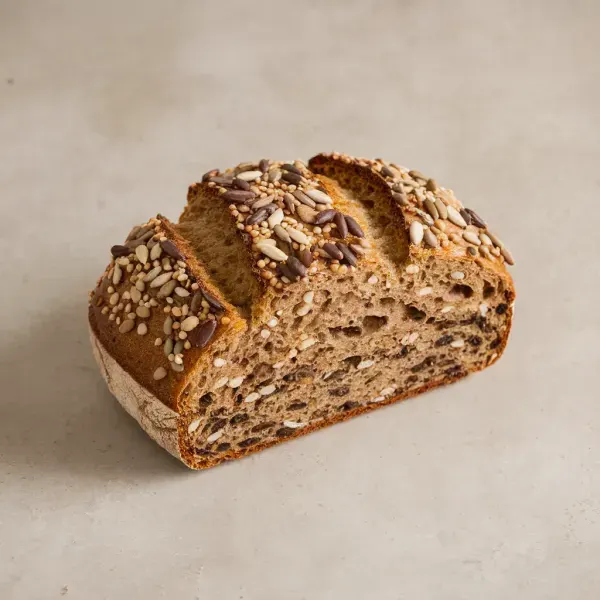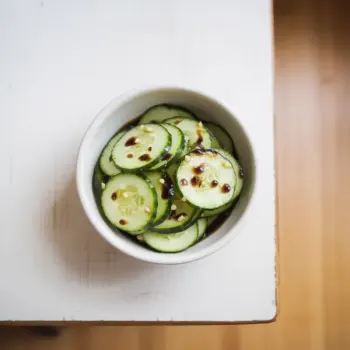
 220 minutes
220 minutesA hearty, nutty-flavored multigrain loaf with seeds, perfect for sandwiches or toast.


Seven-grain Hot Cereal Mix
0 oz
Boiling Water
cups
cups
Unsalted Butter, melted and cooled
tablespoons
Instant Yeast
teaspoons
tablespoons
Unsalted Pumpkin Seeds
cups
Old-fashioned Rolled Oats
0 oz
1. Prepare Grain Mixture
Pour 2.5 cups of boiling water over 1.25 cups of seven-grain hot cereal mix in a bowl. Let it stand for an hour until the grains absorb the water and soften into a thick porridge.
2. Mix Flours
Whisk together 3 cups of all-purpose flour and 1.5 cups of whole-wheat flour in a separate bowl to ensure even distribution.
3. Combine Wet Ingredients
Once the grain mixture has cooled, transfer it to the bowl of a stand mixer fitted with a dough hook. Add 0.25 cups of honey, 4 tablespoons of melted and cooled butter, and 2.5 teaspoons of instant yeast. Mix on low speed until thoroughly combined.
4. Form Dough
Gradually add the flour mixture to the wet ingredients in the stand mixer. Knead on low speed for about 1.5 to 2 minutes, until everything forms a cohesive mass. Let the dough rest for 20 minutes, covered with plastic wrap, to allow the flour to hydrate.
5. Add Salt and Knead
After the rest period, add 1 tablespoon of salt to the dough. Knead on medium speed for 3 to 4 minutes initially, then continue kneading for another 5 minutes until the dough is smooth and elastic. Add 0.75 cups of unsalted pumpkin seeds and knead on low speed for another 15 seconds to incorporate.
6. First Rise
Transfer the dough to a lightly floured counter and knead by hand a few times to ensure the seeds are well incorporated. Shape into a smooth ball, place in a large lightly greased bowl, cover with plastic wrap, and let rise in a warm place for 45 minutes to an hour until nearly doubled in size.
7. Shape Loaves
Once risen, turn the dough onto a lightly floured counter and divide it into two equal parts. Shape each into a 9 by 6-inch rectangle, then roll tightly into a loaf. Spray or brush the tops with water or vegetable oil and coat with 0.5 cups of rolled oats.
8. Final Rise
Place each loaf into a greased 9 by 5-inch loaf pan and cover loosely with greased plastic wrap. Let rise for another 30 to 40 minutes until nearly doubled in size.
9. Bake
Preheat the oven to 375°F with the rack in the middle position. Bake the loaves for 35 to 40 minutes until golden brown and the internal temperature reaches 200°F.
10. Cool
Remove the loaves from the oven and let cool in the pans for 5 minutes. Transfer to a wire rack to cool completely to room temperature, about 2 hours, to prevent soggy bottoms.
Let the loaf cool on a wire rack to avoid a gummy texture and allow the crumb structure to set.
Proof dough in a warm, draft-free environment, ideally at 75°F to 78°F, to support proper rising.
Mix flour and water and let it rest for at least 30 minutes to begin gluten development and improve structure and crumb.
A hot oven and preheated baking stone or heavy baking sheet are crucial for oven spring.
Use lukewarm water between 105°F to 115°F to effectively activate yeast without killing it.




Comments (0)